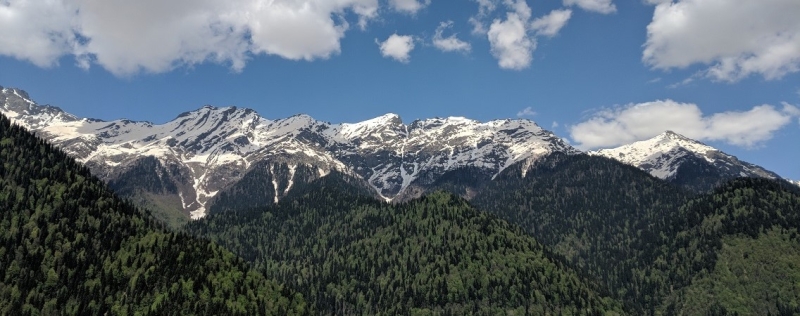
Abkhazia has been and remains a favorite destination for summer holidays. Beaches, relict pine groves, mountains and waterfalls, rivers and lakes with crystal water will always be a place of attraction for city residents. Here you can bask in the warm sea, looking at the mountains, and in a few hours find yourself at an altitude of 2000 m in the valley of lakes. Winter is also suitable for visiting Abkhazia. You won’t be able to swim at this time, but you can ride a snowmobile and watch the sea from the snow-capped peaks.
We have prepared a guide to the country of mountain rivers, where we tell you how to get there, what to do and what attractions to visit in Abkhazia.
How to get there
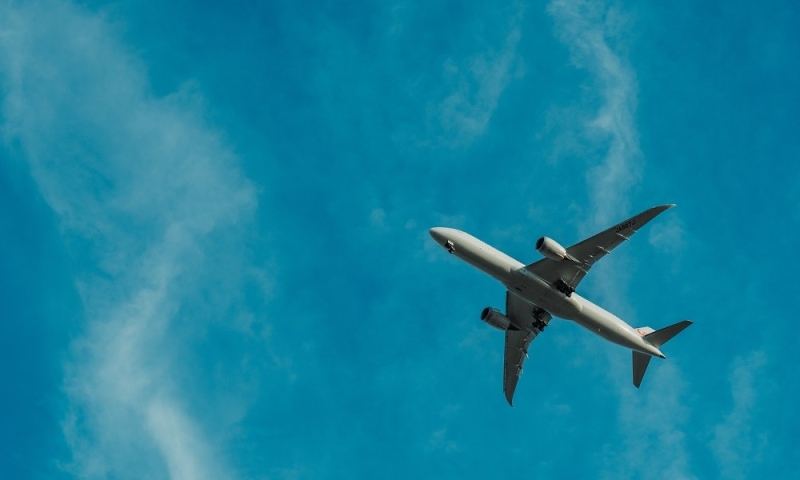
Airplane.The fastest and most convenient way to get to the country from Russia is to fly to Sochi, and from there take a bus or taxi to the border with Abkhazia. In May, the cost of tickets on the Moscow-Sochi route in both directions starts from 8,240 rubles*. The approximate travel time from Sochi airport to Abkhazia is 20 minutes. There is passport control at the border: both a Russian and a foreign passport will do.
Train from Moscow to the capital of Abkhazia, Sukhum, takes an average of one and a half days. There is also an option to travel from Moscow to Adler (Russia) in a day, and from there, by bus or taxi, get to the Abkhaz border in half an hour. Tickets on the Moscow-Sukhum route in both directions will cost 13,100 rubles*, and for the Moscow-Adler train approximately 7,700 rubles*.
Auto.The approximate distance from Moscow to Abkhazia by car is 1700 – 1800 km, depending on the destination. Such a journey can take about 24 hours without taking into account stops. At the entrance to Abkhazia you will need to go through passport control. The price of renting a middle class car in Moscow is from 6,000 rubles* per day (automatic transmission).
When to go
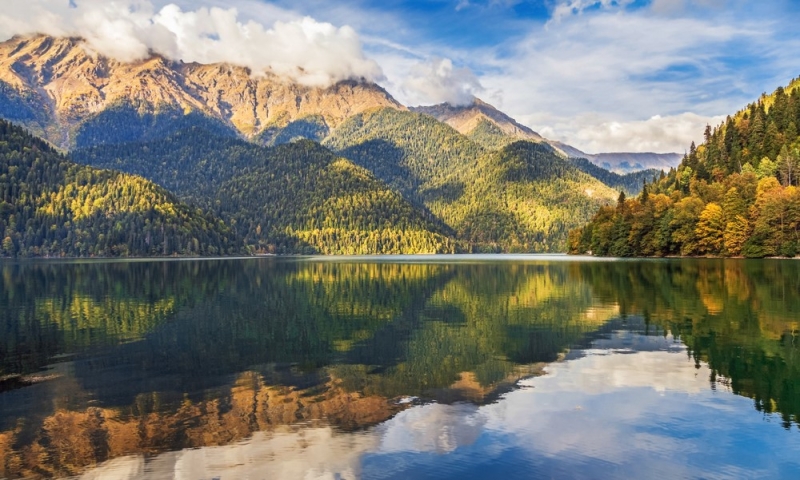
You can travel to Abkhazia at any time of the year. For those looking for warmth and wanting to swim in the sea, the months from May to October are suitable. The peak season is in the summer, during this period the weather is hottest and there are many vacationers on the beaches. In autumn, the number of tourists decreases, and the air temperature is still warm, so September, October and early November are a comfortable time for a holiday in Abkhazia.
You can also travel in winter or spring. At this time there are few tourists and the sea is cold, but Abkhazia is not only a beach holiday. Mountains, gorges, protected areas; cultural sites and sanatoriums; Hiking, horseback riding and fishing are available at any time of the year. February and March are mimosa flowering season. Go by off-road vehicle and snowmobile through mountain forests and flowering mimosa groves to snow-capped peaks with amazing views of the Black Sea. But keep in mind that in winter, some cafes close before the weather warms up.
Tourist cities of Abkhazia
Cities and settlements of Abkhazia popular among tourists are Gagra, Pitsunda, New Athos and Sukhum. The map of attractions in Abkhazia is varied, but many of them can be seen in a day as part of one excursion.
Gagra
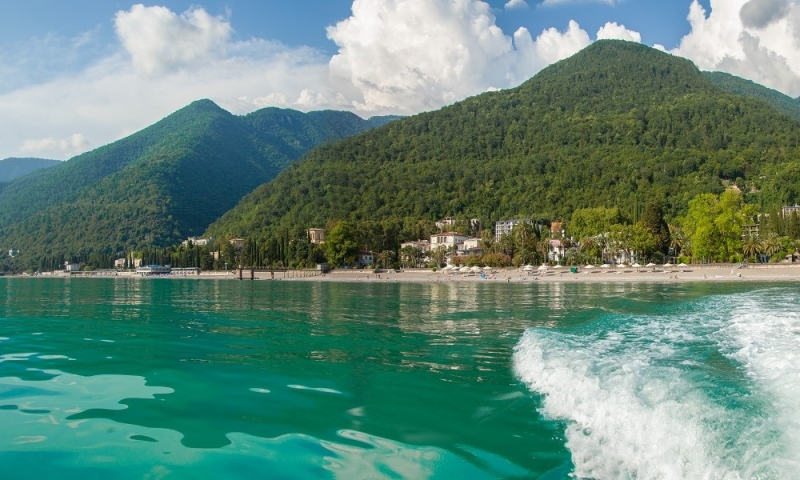
Beach resort on the Black Sea coast, 36 km from Adler. The mountains protect the city from cold winds, and sometimes people swim here even in November. Among the attractions of Gagra are the embankment and beaches in the surrounding area, the building of the Winter Theater, the colonnade in the Primorsky Park, the historical restaurant Gagripsh and the castle of the Prince of Oldenburg.
Where to stay
A.V. Sokol Family Hotel (rating 9.2) – from 6,800 rubles* per night for two. Four-star hotel with family and standard rooms. This option is suitable for fans of the all-inclusive format, as the territory has a swimming pool, a children’s playground, sun loungers and umbrellas, as well as its own access to the beach. There is a water park next to the hotel.
Address: Gagra, st. Abazgaa, 50/1.
Aquamarine Family Club (rating 9.4) – from 9,000 rubles* per night for two. Family hotel with access to the sea. It was built recently, so it has modern renovation and new infrastructure. Three meals a day, a heated swimming pool, a games room and animation will allow parents to relax a little and children to have fun. There are standard, family rooms and suites.
Address: Gagra, st. Abazgaa 58.
Pitsunda
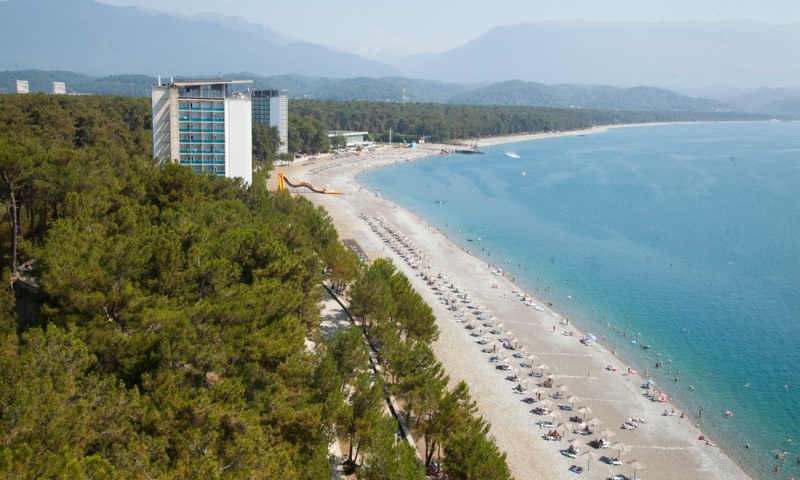
A small resort town with an amazing microclimate. The combination of sea breeze, pine needles, pines, eucalyptus and boxwood makes the air healing, which is why boarding houses and sanatoriums are located here. Sights of Pitsunda include picturesque beaches, the Great Pitiunt nature reserve, a lighthouse, a relict pine grove and natural sites in the vicinity of the city.
Where to stay
Hotel Paradise Beach(rating 8.8) – from 5,600 rubles* per night for two. Four-star hotel on the Black Sea coast. Guests have access to three meals a day, a swimming pool, a sauna, a bar and a fitness room. The hotel has family rooms and suites with sea views. The location is remote from the city center, so peace, quiet and a clean beach are guaranteed to you.
Address: Pitsunda, st. Tumanyan, 35V.
“Mini-hotel “DARYA”” (rating 9.9) – from 4,100 rubles* per night for two. A small guest house with rooms accommodating up to four people. Located near the picturesque beach and Pitsunda pine grove. There is free parking and a children’s playground on site. Guests can use the shared kitchen to prepare their own meals, or have an outdoor barbecue.
Address: Pitsunda, st. Nozadze 28.
New Athos
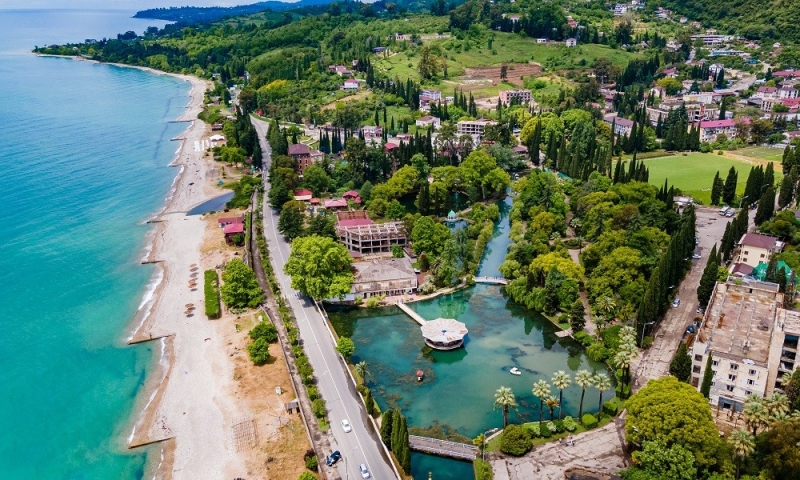
A city on the coast with a rich history; the first mention of it dates back to the 3rd century. The abundance of cultural monuments is combined here with unique nature. The main attractions of New Athos are the New Athos Monastery, the cave, Cypress Alley, the Anakopia Fortress, the Psyrtskhinsky Reserve and Stalin’s dacha. Beach holidays are as popular here as in other coastal cities of Abkhazia.
Where to stay
Hotel Loft Afon(score 9.1) – from 7,400 rubles* per night for two. A modern hotel with fresh renovation, 810 m from the New Athos Monastery. It offers free parking, a terrace, and air conditioning in the room. A child under 3 years old stays free of charge on existing beds, an additional baby cot is paid separately.
Address: New Athos, st. Ladaria.
Abaash Hotel Afon (rating 9) – from 4,900 rubles* per night for two. Stylish and spacious rooms with beautiful views. The main attractions of New Athos can be reached in 3 minutes on foot. Hotel guests note the friendliness of the staff and excellent service. Breakfast or three meals a day are paid separately.
Address: New Athos, st. Eshba, 2/10.
Sukhum
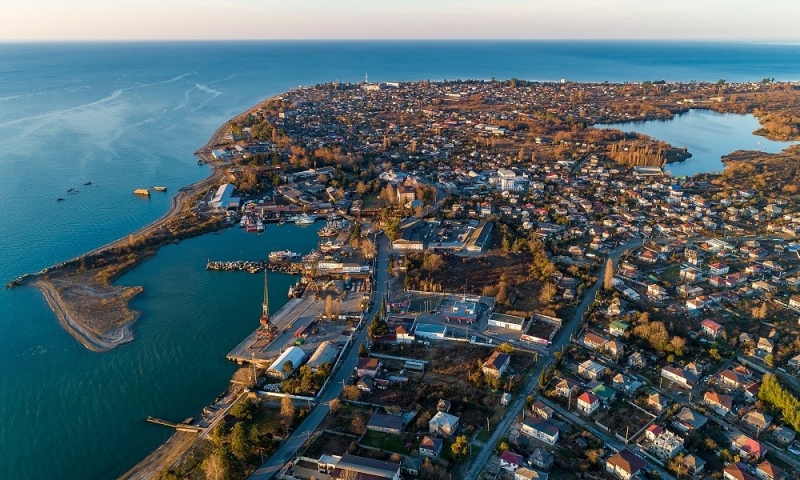
The capital and economic center of Abkhazia, founded in the 6th century BC. The city does not look like a classic metropolis: there are no skyscrapers, but there is a lot of greenery and a fairly relaxed atmosphere. Interesting places to visit here include Leon Avenue, the Mahajiri and Dioscuri embankments, the botanical garden, temples and cathedrals, as well as wild beaches in the surrounding area.
Where to stay
DEM Hotel(score 9.3) – from 8,900 rubles* per night for two. Cozy hotel on the Dioskouri embankment. Breakfast is included in the price; there is a mini-market, cafe and parking on site. Guests note the hotel’s excellent location, sea views, caring staff and excellent service.
Address: Sukhum, emb. Dioskurov, 4.
Boutique Hotel Amra (rating 9.5) – from 4,900 rubles* per night for two. Boutique hotel with standard, family and luxury rooms. Located within walking distance from Freedom Park, Sukhumi Botanical Garden and 1.5 km from the beach. The price includes breakfast on a cozy terrace.
Address: Sukhum, st. Confederates 28.
Sights of Abkhazia
Lake Ritsa
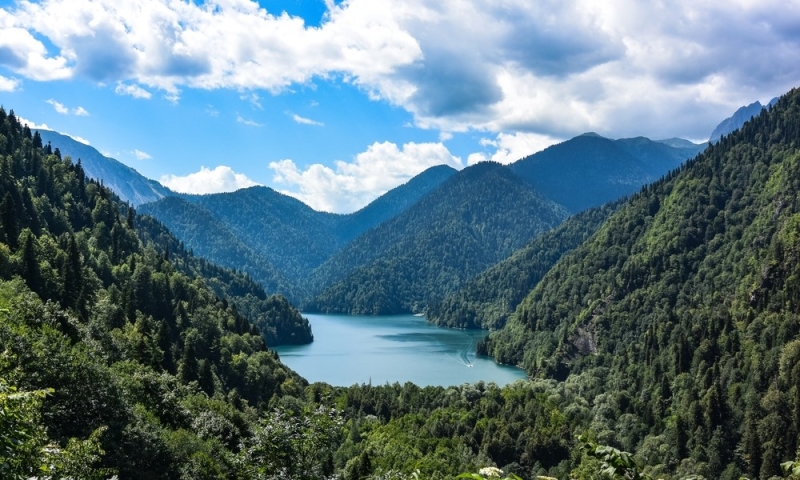
A real treasure of Abkhazia is hidden among the mountains at an altitude of 1000 m above sea level. The lake is of glacial-tectonic origin, and the water in it is very clean. Swimming in Ritsa is prohibited, but you can rent a catamaran and take a ride on the mirror-like surface of the water.
The lake is located 55 km from Gagra and is part of excursion tours; in one day you will have time to visit this and other attractions of Abkhazia. The road to Ritsa is a separate pleasure, but keep in mind that you will have to drive along a serpentine road. Along the way you will encounter breathtaking mountain landscapes, waterfalls, rivers and gorges. If you continue your journey from Ritsa upward and rise to an altitude of 2000 m above sea level, you will find yourself in the so-called Alpine meadows. In summer, hiking and horseback riding tours through the mountains and valleys are popular here, and in winter, snowmobile and ski tours are popular.
Yupshara Canyon
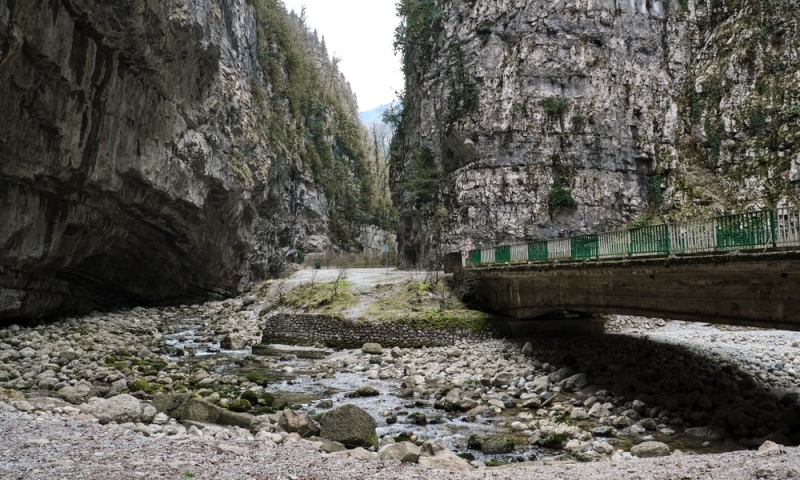
The road to Lake Ritsa runs through a rocky gorge formed as a result of a strong earthquake millions of years ago. The canyon is a giant crack in the mountain through which the Yupshara River flows. The distance between the two rocks in the narrowest part of the gorge is 20 m, the length of the entire canyon is approximately 8 km. There are other tourist locations nearby – the “Girl’s Tears” and “Men’s Tears” waterfalls, the Gegsky waterfall and the Blue Lake. Usually they are part of one excursion.
Stalin’s dacha on the Cold River
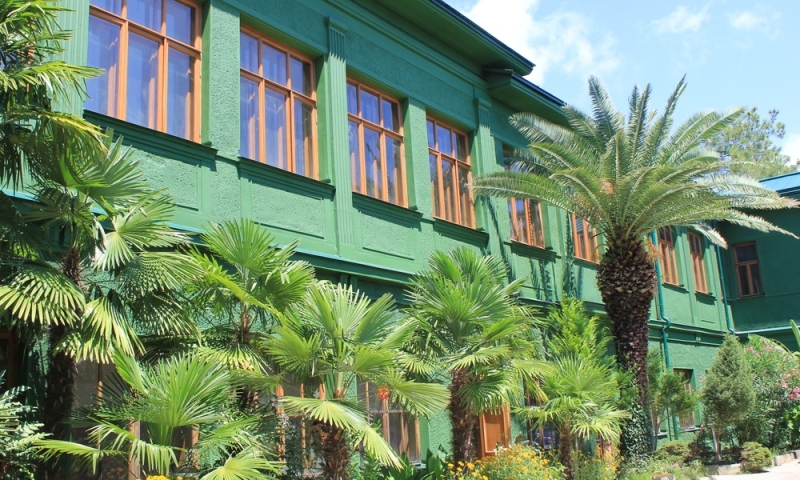
In total, there are 5 Stalinist residences in Abkhazia: in Sukhum, in New Athos, in Musser, near Lake Ritsa and on the Cold River, 15 km from Gagra. The latter is Stalin’s favorite dacha in Abkhazia, where he rested most often. The house was built at an altitude of 200 m above sea level, the place for it was carved right into the rock, and outside it was protected by dense vegetation, so it is almost impossible to notice it. It’s worth visiting here if only for the view of the Black Sea from the dacha and the relict pine grove leading to the water. The combination of alpine, river and sea climates makes the air truly healing.
New Athos Monastery
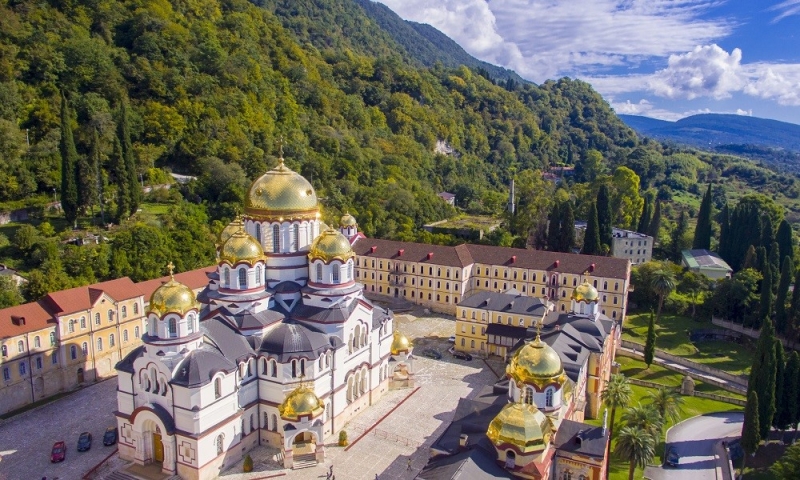
Orthodox male monastery at the foot of the mountain in the city of New Athos. The complex was erected in honor of St. Simon the Canaanite and consists of 6 churches. The main cathedral, Panteleimonovsky, was built in the New Byzantine style and is open to the public. The interior painting of this cathedral is made in the Palekh icon painting tradition. Its primary colors – muted blue, dark brown and gold – are very pleasing to the eye. There is peace on the territory of the complex: the silence of the cathedrals, tall green cypress trees, palm trees, views of the city, sea and mountains give peace.
New Athos Cave
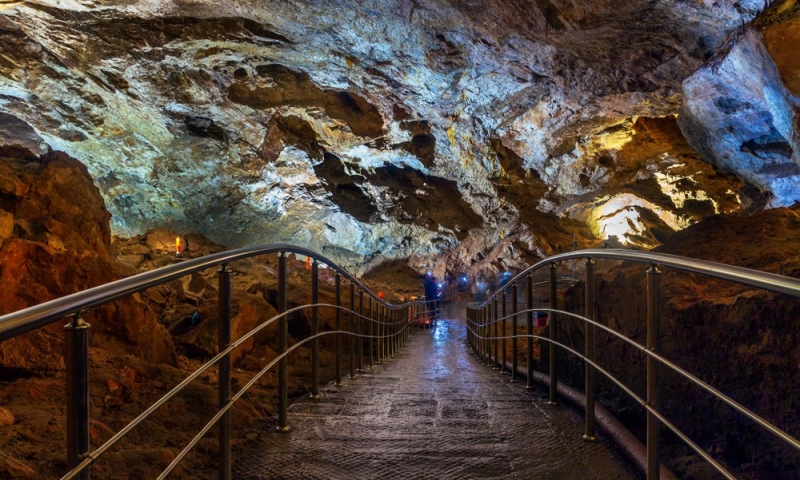
In 1961, local resident Givi Smyr, together with professional speleologists, descended into the “Bottomless Pit” failure in Iveron Mountain. This is how a huge karst cavity was discovered in the bowels of the earth, which opened to the public in 1975. Today, an artificially created tunnel leads there, along which a cave metro with tourists runs. Underground there are 9 halls with hundreds of thousands of crystalline formations of various shapes and colors. Tour groups follow a 1.4 km walking trail and stop at special observation platforms to view stalactites, stalagmites and cave lakes under a stone sky.
Psyrtskha station
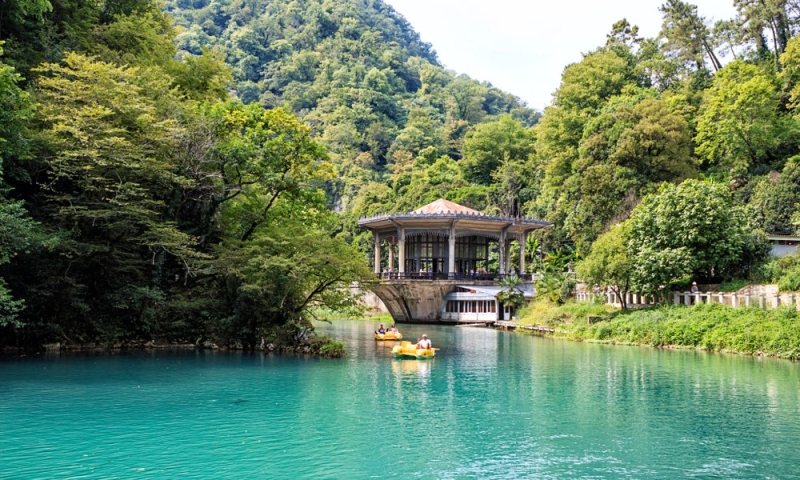
The sights of New Athos are varied, one of them is the Psyrtskha railway station, built in 1944. Once operational, the now abandoned platform looks mysterious and even mystical. Trains occasionally pass by, but no longer stop there. The station pavilion is located on the shore of the reservoir and seems to float above the water, immersed in the greenery that surrounds it. Inside the building, on the floor you can find a seven-pointed star. Some consider it a magical symbol of the unity of the material and spiritual, others consider it a classic element of ancient Georgian heraldry.
Sukhumi Botanical Garden
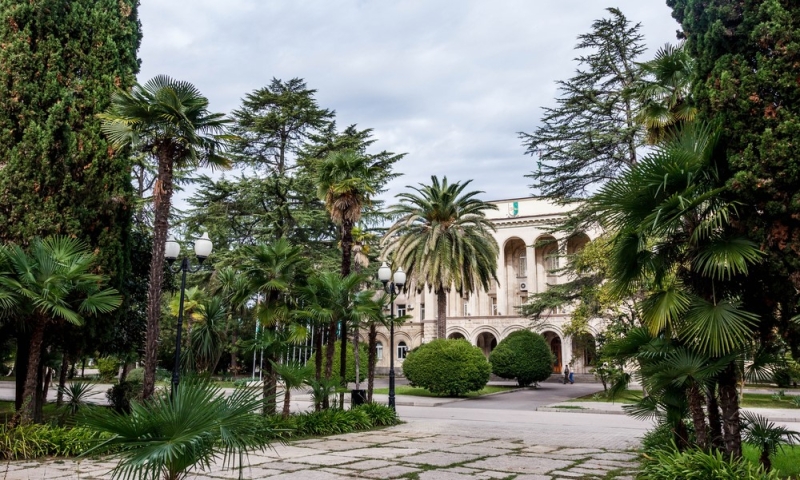
One of the oldest botanical gardens in the Caucasus is located in the center of Sukhum. It was founded in 1840 and was originally conceived as an apothecary garden, which later gained popularity. In total, the garden contains about 5,000 species of trees and plants, including European, Asian and South American flora. Here you will find the oldest giant Caucasian linden tree, sequoias, palm trees, bamboo groves, bananas, lotuses and decorative ponds with water lilies. You can stroll through the garden on your own, or you can take a guided tour. Another attraction of this place is the air, which is considered healing.
Restaurants and cafes

You can also get acquainted with the culture of a country through its national cuisine. People in Abkhazia love hearty dishes made from vegetables, meat, legumes, flour and dairy products. Traditional items on the menu are bean soup (akurdtsa), bean lobio (akud), corn porridge (mamalyga), appetizer of grated vegetables and nuts (achapa), shish kebab, khachapur, khinkali. Abkhazians add herbs and spices to food to make the taste richer, as well as adjika sauce for spiciness. In resort towns you will find restaurants serving both local and European cuisine.
“Mukhus”, Sukhum
A cafe with an interesting interior and national Abkhaz cuisine not far from the Sukhumi Botanical Garden. The menu includes soups, pastries and salads, and hand-made dumplings. Khinkali is prepared from scratch and is not frozen, so it is always fresh and hot.
“Leon”, Sukhum
Modern restaurant on the territory of the hotel of the same name, located on the Makhadzhirov embankment. Abkhazian, European and Japanese cuisine: the menu includes pizza, khachapuri and even rolls. Suitable for family dinners and business meetings.
“Veranda”, Gudauta
View cafe with terrace. European cuisine, modern interior, live jazz music in the evenings. The menu includes steaks, pizza, salads, pastries and cocktails. Veranda with sea view is open from June to September.
“Amshyn”, Pitsunda
Caucasian and European dishes, fresh Black Sea fish and farm meat. The cafe is located on the coast in a pine forest and has a panoramic view of the sea. Guests can use the establishment’s sun loungers and umbrellas.
Amore, Gagra
Cozy restaurant overlooking the sea in old Gagra. Modern European style, friendly staff and beautiful presentation of dishes. From the menu, visitors note pasta, fried cheese, salads, burgers and desserts.
“Abkhazian courtyard”, Gagra
Traditional restaurant of Abkhaz cuisine 25 km from Gagra and 11 km from the Bzyb Gorge, surrounded by mountains. It attracts tourists with its views: one of its gazebos is located directly above the Bzyb River, and a glass bridge leads to it.
What to bring
Abkhazia is called the country of the soul, but it is also the country of the stomach. Hospitable local residents with their love of feasts, combined with the gifts of nature in Abkhazia, will not leave anyone hungry. Juicy fruits, fresh vegetables, cheese, nuts, traditional national dishes, sauces and drinks – this is an incomplete list of what you should try and what you can bring with you as a gift.
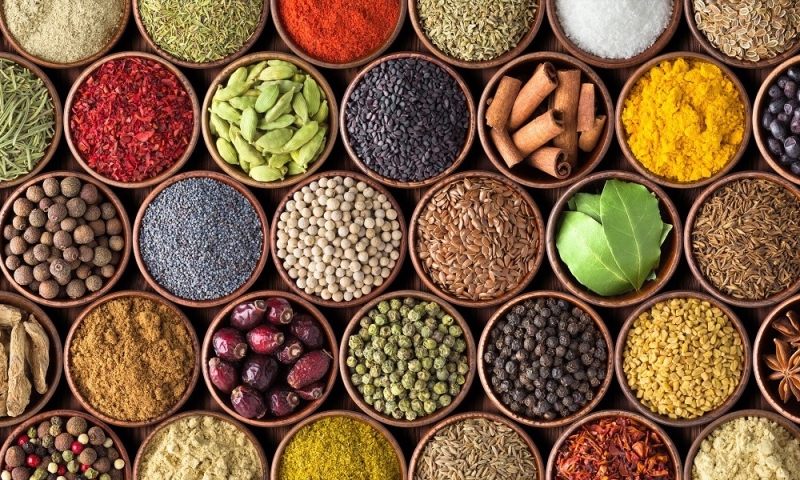
Seasonings. The subtropical climate and mild weather conditions of Abkhazia are favorable for growing spices. Popular seasonings here are sumac, anise, cumin, fenugreek, several types of pepper, coriander, hops-suneli (a combination of different seasonings), saffron, cilantro, cumin, bay leaf, etc. It is most profitable to buy spices by weight, in addition, you can check the quality of the product, in contrast to ready-made packaged mixtures.
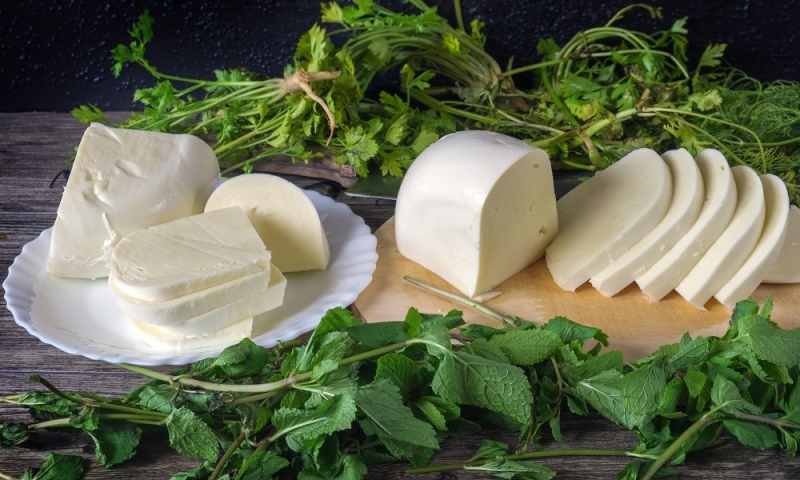
Cheese. The most popular Abkhaz cheese is suluguni. It is prepared from goat, cow, buffalo, sheep milk or a mixture of them. Suluguni can be regular or smoked, the latter tolerates transportation well and is stored longer.
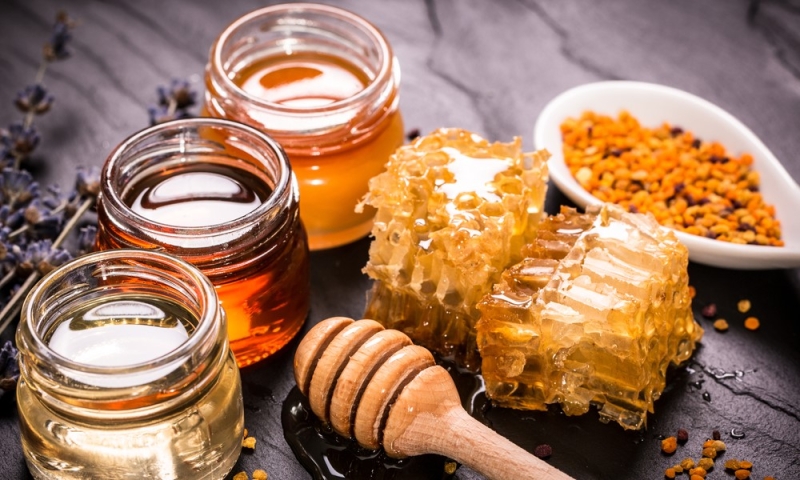
Honey. Local residents treat honey as a medicine. There is a different type of honey for every organ or disease in Abkhazia. Popular types are chestnut, mountain, linden, and floral. Usually group excursions include visits to shops where honey is sold, with tasting of this product.
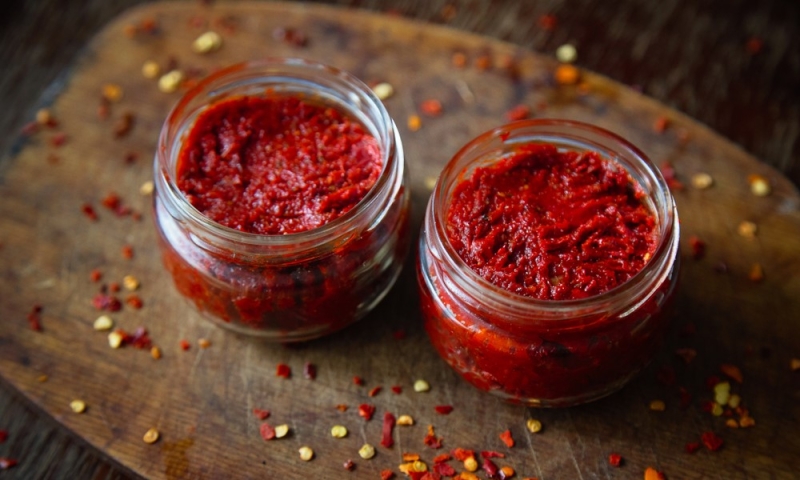
Sauces. They say that Abkhazian adjika is the best among Caucasian ones. According to tourists, homemade adjika, which is sold in markets, is the most delicious. It can be red, green or a mixture of dry herbs. Another popular hot sauce is asyzbal, made from ripe cherry plum.
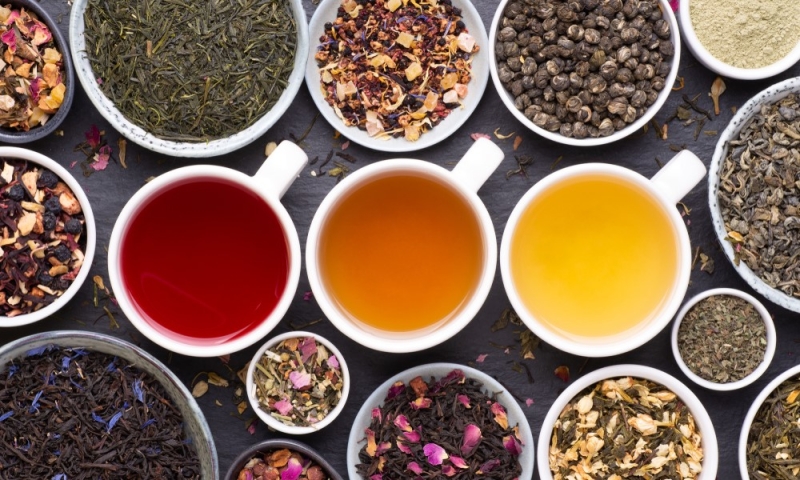
Tea, herbs. In Abkhazia there are more than 600 species of plants that can be considered medicinal and which are used in folk medicine. In tourist shops you will find various herbal infusions and natural cosmetics containing them. The country also has its own “Bouquet of Abkhazia” tea, black and green, which can be bought by weight or in gift packages.
To summarize
Abkhazia really has something to offer: a mild climate, rich nature, cultural attractions, delicious national dishes and hospitable locals. You can go on a trip at any time of the year – both in summer and winter you can easily find something to do. Find affordable accommodation options and tickets on OneTwoTrip.
*Prices are current at the time of publication.

